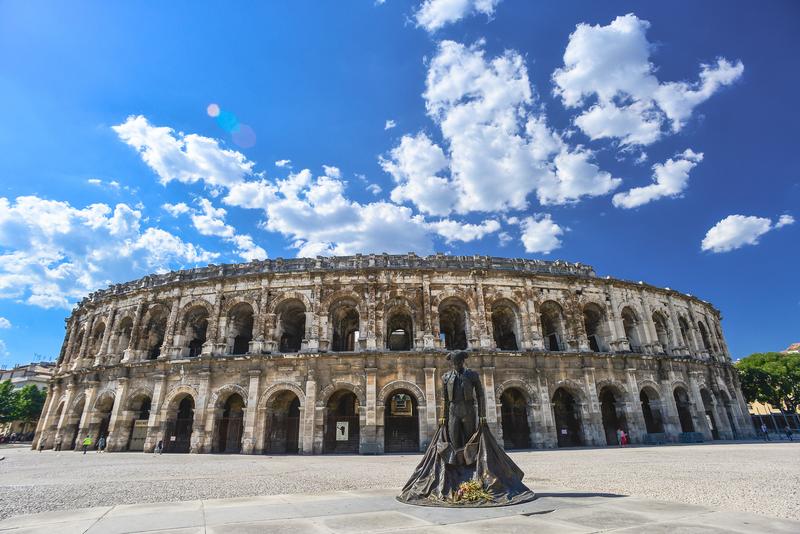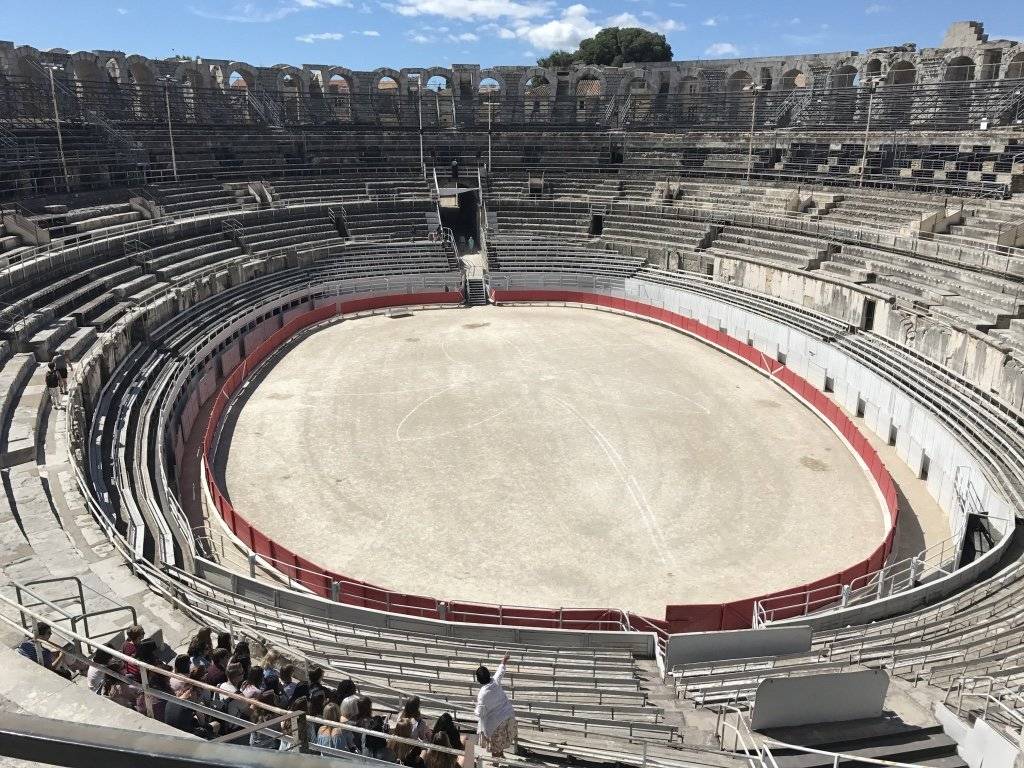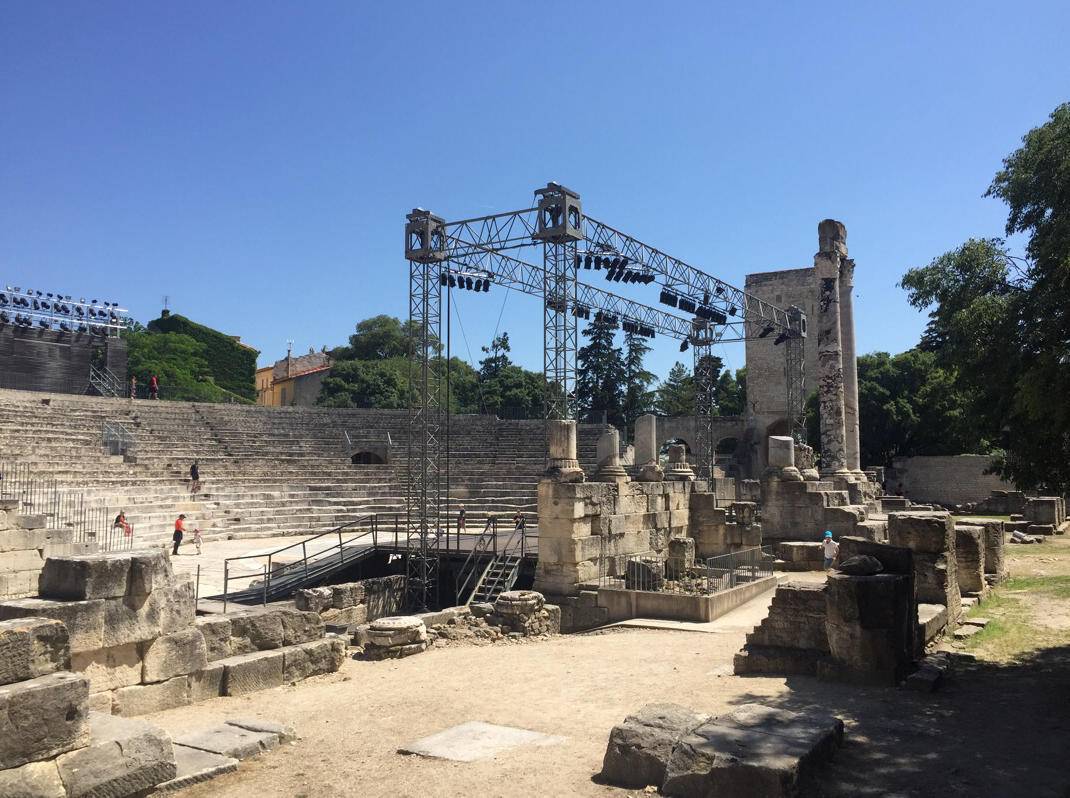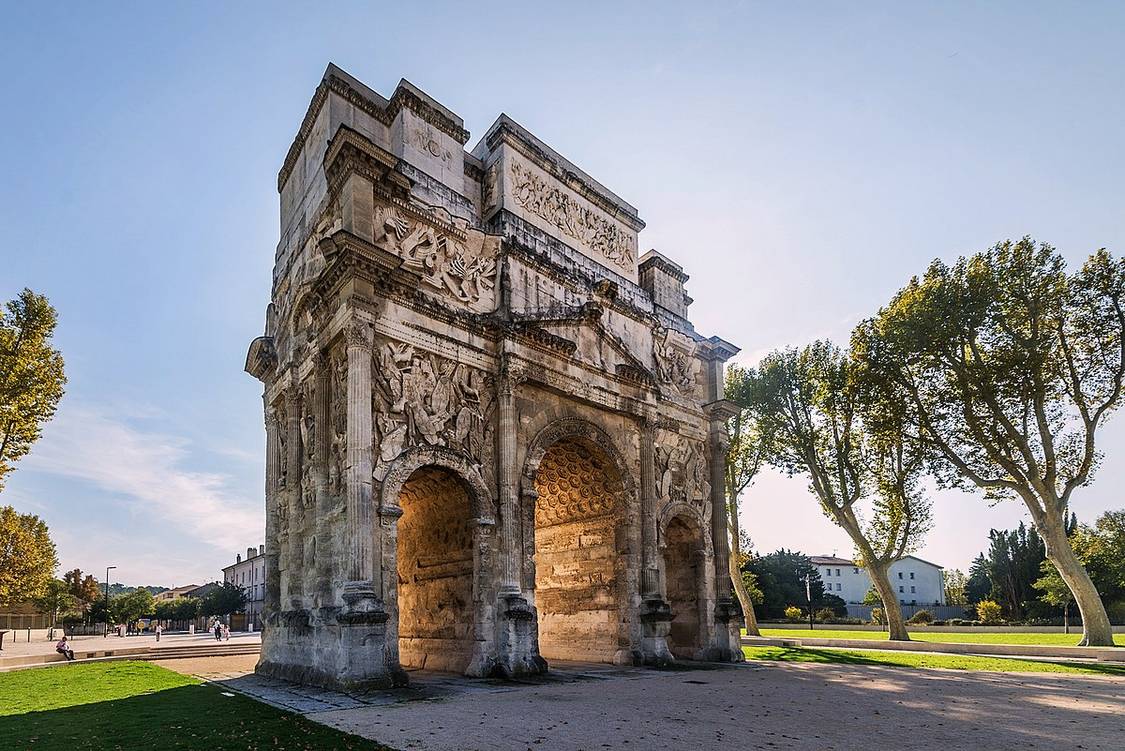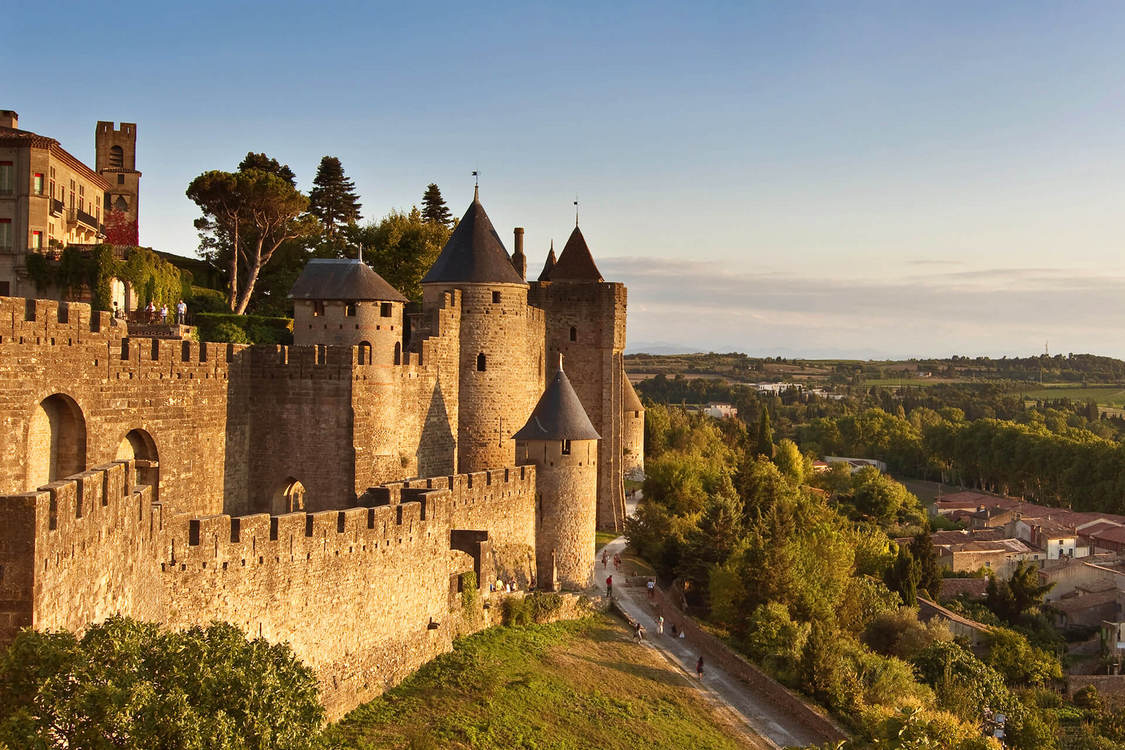Arles Amphitheatre
Built during the Roman era, the Arles Amphitheatre is the most prominent landmark of the small town of Arles. Located in the city center, it stands tall and magnificent, visible from any angle. This oval-shaped arena was constructed in 40 BC, with a length of 136 meters and a width of 107 meters, accommodating over 26,000 spectators. It is one of the outstanding representatives of Roman civilization at that time.
Arles Roman Theatre
The south of France is rich in ancient Roman ruins, one of which is the Arles Roman Theatre, built at the end of the 1st century. This large open-air amphitheater in the Greco-Roman style, despite having gone through centuries of glorious history, still allows visitors to feel its former grandeur and magnificence. Although the theatre has suffered various degrees of dismantling and division throughout history, visitors can still appreciate its past splendor. It is one of the must-see ancient sites in southern France.
Pont du Gard
The Pont du Gard was built on the eve of the Common Era to provide a crossing over the Gardon River for the Nîmes aqueduct. Designed by Roman architects and hydraulic engineers, this three-tiered bridge, approximately 50 meters high, spans 275 meters and showcases a masterpiece of both technology and art. In 1985, the World Heritage Committee described the Pont du Gard as an astonishing ancient structure.
Maison Carree
The Temple of Carli, also known as Maison Carree, is a well-preserved Roman-era square temple built around 5 AD to commemorate the two adopted sons of Emperor Augustus. It is one of the best-preserved historical monuments in Nîmes and an important ancient temple. The Maison Carree consists of a podium and 30 Corinthian columns. In ancient times, this ancient building was the economic and administrative center of the city of Nîmes. During the Middle Ages, it was used as an administrative hall and was successively converted into a stable, a church, a provincial archive, and eventually a museum. The Maison Carree is still in use today and has been well-preserved for many years, which is its precious historical significance and one of the miracles of ancient architecture.
Triumphal Arch of Orange
Orange is a famous historical city in southern France. Its Roman Triumphal Arch was built between 10 and 25 AD during the reign of Augustus to commemorate peace and prosperity. This well-preserved arch is adorned with exquisite low reliefs and is considered one of the most artistically valuable provincial triumphal arches that have survived to this day. In December 1981, UNESCO listed the Roman Triumphal Arch and the theater of Orange as World Cultural Heritage sites in recognition of their value.
Castle of the Counts
The Castle of the Counts, built in the 12th century, is a surviving administrative center in the form of an interchange, once the residence of the governor of King Philip V of France within the city of Ghent. Over the following centuries, the Castle of the Counts was repeatedly renovated and expanded until around 1500 when the construction was completed, becoming a majestic and grand castle. The interior of the castle is luxuriously decorated, with a plethora of sculptures and murals. The diverse exhibits showcase the long history and culture of the city of Ghent. The castle's observatory and bell tower allow visitors to overlook the beautiful scenery of the entire city, while the gardens surrounding the castle are perfect places for relaxation and rest.
